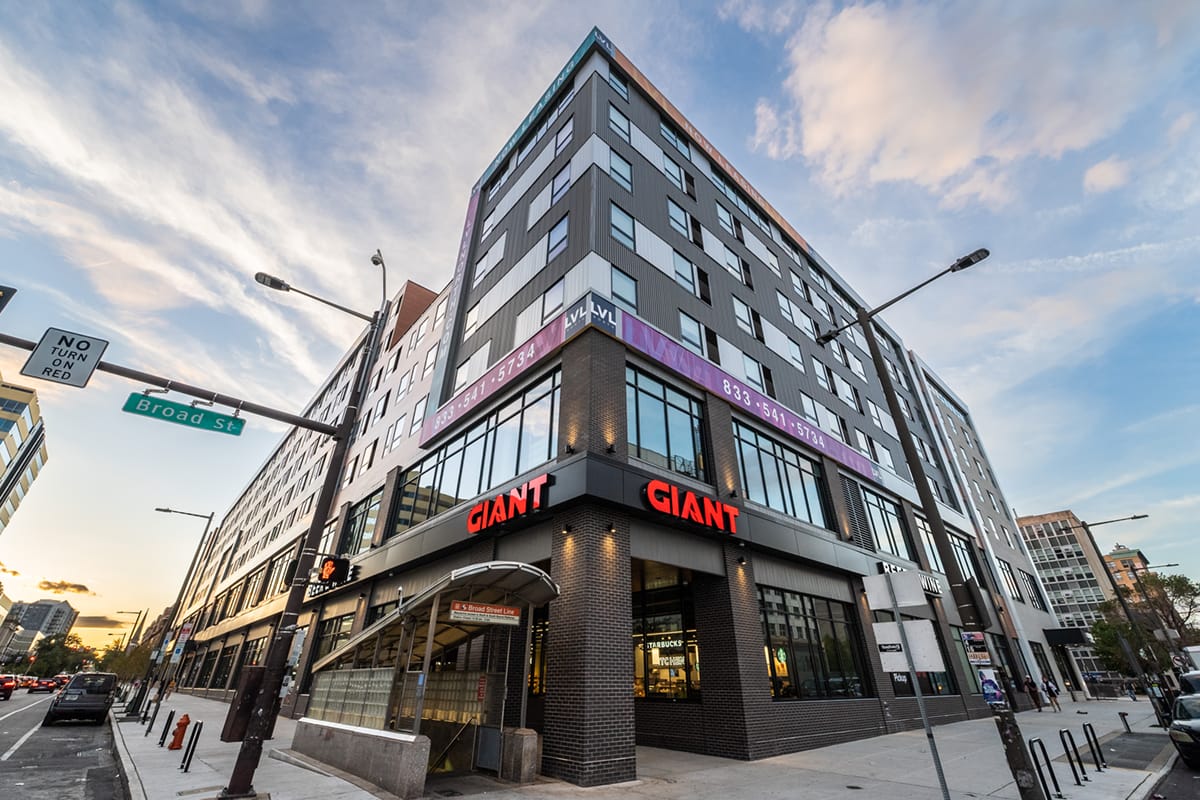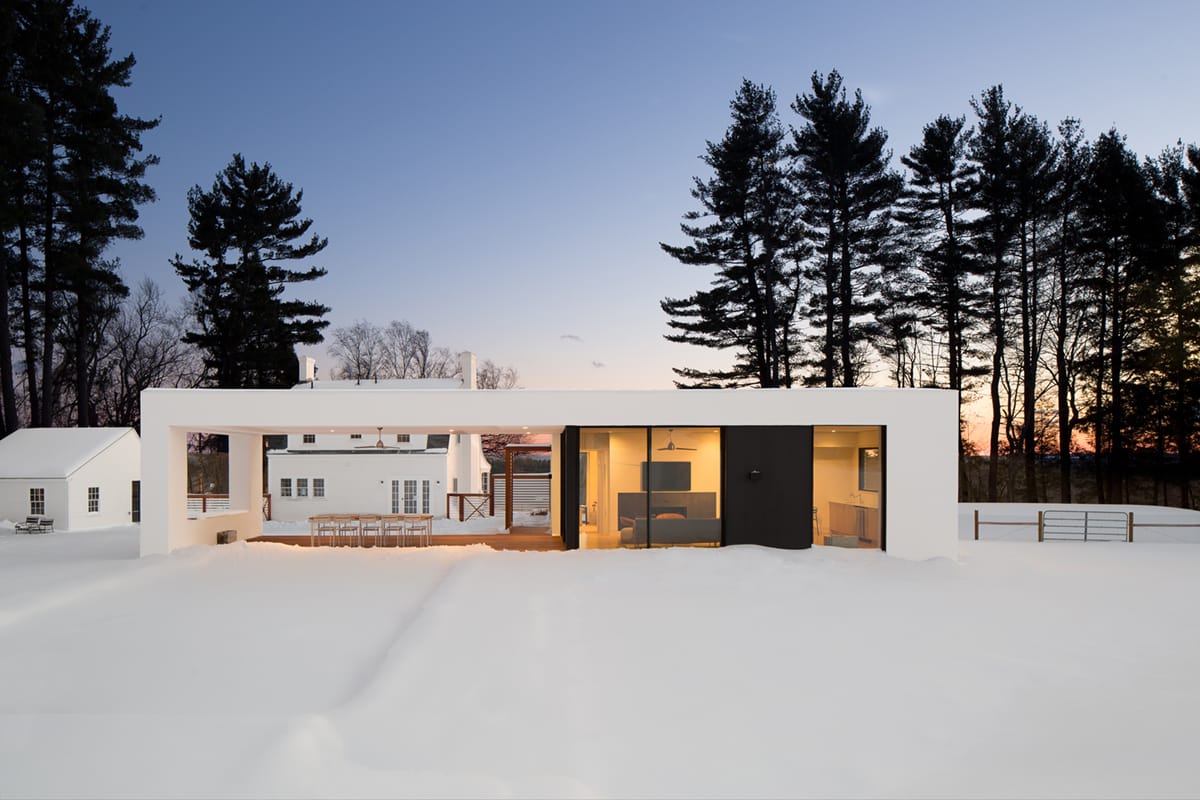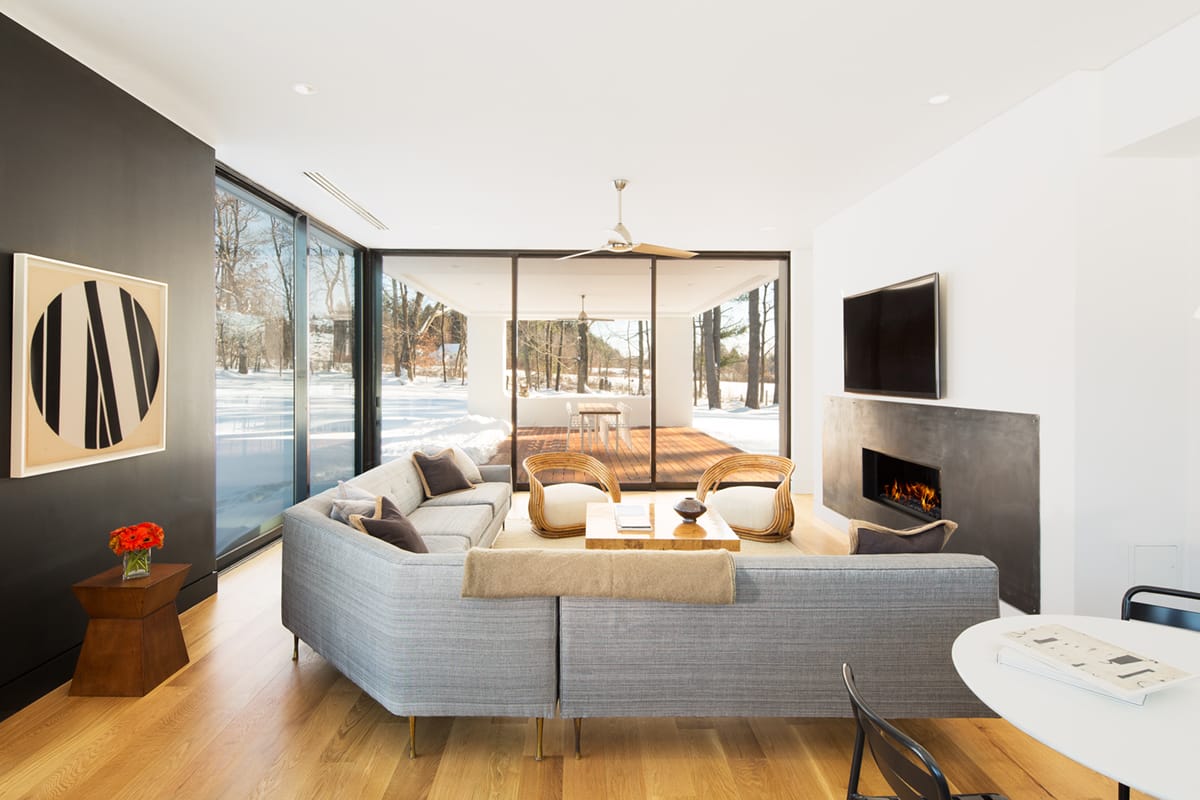Modular Architecture: Thinking Outside of the Box with Sara.Ann Logan
It might seem strange to use the term “out of the box thinking” in the modular construction world, but when you’re talking about Sara.Ann Logan, the VP of design at Volumetric Building Companies, the phrase fits like a glove.
Originally from Jamaica and now a naturalized citizen, Logan has built a career on curiosity, innovative thinking, and being solutions-driven. She’s thrived on the juxtaposition of tradition and innovation, and it turns out that’s precisely what cutting-edge design in the modular building world demands.

Broad Street Apartments – Hybrid (Modular + Traditional) Design Build. Photo Courtesy of VBC
Varied Early Interests
Many people don’t decide what they want to do with their lives until much later, but in Logan’s case, clarity came early, and by the time she was in middle school, she was already focused on the built environment. But architecture wasn’t always the obvious choice. In fact, it was one of three career paths she was considering in middle school – the other two being law and computer science, or, as she puts it, “I always loved building, I always loved arguing, and I always loved coding, so I knew it was going to be one of those three.”
While law fell by the wayside, architecture and computer technology did not, and they both became the foundation for a career that straddles the line between adhering to traditional best practices and forging new, innovative paths.
Logan also traveled extensively and lived and worked in diverse places, both inside and outside of the United States, all of which fueled her desire to understand, improve, and innovate.
A Traditional Start
Logan took a similar path to most architects in the early days of her career. After completing her studies, she worked in small boutique and large regional and international architecture firms and followed accepted processes and procedures for designing and delivering conventionally built structures.
Unlike most architects, however, her innate curiosity and drive to solve problems made it impossible to ignore the inefficiencies built into the fabric of these conventional structures, whether it was their design or hands-on construction.
Logan began to observe the waste in the industry, both in terms of intangible things like time and effort spent designing essentially the same items time and again and also the real-world costs of avoidable delays due to value engineering and late coordination that are often built into traditional construction and delivery.
Early Adopter of Modular Construction
While Logan had become aware of these issues of inefficiency in construction of the built environment - it wasn’t until she was hired
to do some work for a modular construction company that the solution first became apparent.
Not only did this building methodology solve many of the on and off-site issues Logan had noticed, but the industry was underserved by the design and engineering profession.
So, at a time when modular buildings were still seen as less than by many in the architecture and construction world, Logan took the plunge and partnered to launch a design-build firm that designed, built, and constructed modular high-end single-family homes. But even though she could see the value of this kind of construction, it wasn’t universally accepted.“
When I first started designing for this industry, it was something you had to hide.” Says Logan. “Even though we were building beautiful, well-designed, well-constructed custom high-end homes, most people still automatically pictured double wide trailers as soon as they heard the words – prefab or modular."

VBC Philadelphia Headquarters – Adaptive Reuse. Photo Courtesy of VBC
The company was a success, but to keep overhead costs low and streamline the process, Logan and her business partner outsourced the manufacturing and transportation of their designs to various Pennsylvania manufacturers. After some time, she was connected with VBC, and the foundation of an enduring partnership was created.
The Shift to Volumetric Building Companies and A Modular First Approach
After providing design services to VBC for a while and developing a relationship with the leadership team at the company, the opportunity arose to increase vertical integration and provide design and engineering services under the VBC banner. Once again, Logan stepped towards the challenge.
While some in the architecture profession might still have walked away from that challenge, for Logan, it was just another opportunity to learn, create, and continue to change how modular construction is viewed by driving design and innovation from within to support VBC’s already existing manufacturing and construction groups.
So far, it’s been a match made in construction technology heaven.
A New Set of Challenges
Tackling something new, even when you have a lot of related experience in the industry, always comes with surprises and new challenges to overcome, and the shift to providing modular design, architecture, and engineering services for VBC was no different.
Even with prior experience in DfMA and industrialized construction planning and delivery, it takes practice, energy, and support to build a team that thinks about buildings and design holistically, creating places and spaces that people want to inhabit while prioritizing manufacturing and construction needs that need to be addressed both at an individual module scale and at larger building scale. But that’s precisely what VBC is doing - designing products and projects to fill their global factories and support local communities.
Another challenge has been recruiting and training new talent, and here again, Logan has taken a best-of-both-worlds approach.
On the one hand, several core members of the design team she’s built at VBC are solid, experienced architects who understand the rules and best practices demanded by the profession.
On the other, she’s been actively recruiting young architects, often through internship programs run by the company, and allowing that diverse mix of established skills and fresh ideas to fuel innovation, invention, and creativity.
It’s not just talent that has been a challenge, though.
As a global leader in the modular building space, VBC designs and builds modular structures in several countries outside the United States. As anyone who has worked in varied locations knows, there are myriad differences – large and small – between construction in one part of the world and another.
Whether it’s something as fundamental as using imperial or metric dimensions or choosing between wood, metal, or something else, every new project brings a unique set of problems that must be solved, and opportunities to seize that must be solved to get from concept to completion.
Advice for Young Architects
Experience, when it’s done right, brings insight, and Logan has gained plenty of that over the years.
As with everything else in her surprising, successful career so far, her advice for young architects initially seems contradictory.

Sharing Insights at World of Modular
Sara-Ann Logan, AIA, RIBA, NOMA, IIDA, Vice President of Design, Volumetric Building Companies
Speaking to Sara.Ann Logan, it’s clear that while she’s always felt privileged to have been given such supportive mentoring by some of the best minds in the architectural profession, she also doesn’t feel like all students are as fortunate as she was.
She would like to see some changes in how young architects gain experience. Specifically, she’d like to see them able to explore more paths, new areas, and corners of the industry and gain varying experience rather than spend years drawing ‘the same old stair details.
’It’s a philosophy that she and the team at VBC have built into their recruitment, HR and workforce development strategy, and it’s what she’s going to be talking about at this year’s World of Modular trade show.
During her engagement at the show, she will be sharing her own experiences and how VBC has adopted a ‘home-grown’ talent philosophy across the larger organization. “You will hear more about how we practice workforce development across the whole spectrum, from trades to professional roles,” says Logan, “along with nuggets of data and the reasoning behind our employee development strategies.”
First, she encourages new architects to learn from every new experience, pay attention to everything happening around them, and absorb information, wisdom, and lessons. Or, in her words, “Be a sponge. Learn as much as possible when starting out in this or any other industry.”
Then, she advocates that they question everything. Because when it’s done properly and professionally, questioning can be both a learning experience and the catalyst for necessary change and improvement.
Logan also wants to see more young architects exposed to different elements of the construction world outside of traditional professional practice.
Because even though the fundamentals of architecture and design largely haven’t changed, our options to deliver them to the world have, and we need a crop of young, trained architects, engineers, and designers who understand not only what the boundaries are but also when to push them to create something new and exciting.


Custom Poolhouse – Hybrid (Modular + Traditional) Design Build. Photo Courtesy of Jared Kuzia
What's Next
It’s probably not surprising that someone who has chosen a less traditional path and, in many ways, is creating new rules along the way, Sara.Ann Logan is not done being a changemaker.
Within the scope of her role at Volumetric Building Companies, she’s found new ways to marry her love of architecture with computer technology, and VBC is rapidly adopting and creating tools and technologies that span architecture, manufacturing, construction, and operations to support their growth, build the future, and improve lives.
The team that Logan leads has been changing the way modular buildings are designed and realized and how the world views them, too, and she’s excited to see how this approach to the construction industry is changing in general, both in terms of how VBC creates and builds its own vertically integrated ecosystem, and in general in the larger architecture, engineering, and construction fields.
“In the future,” says Logan, “I’m hoping to see architects learning to think like builders and builders considering things from a design perspective. It’s this type of collaboration and the increasing interconnectedness of the construction world that is going to make that happen, and it’s exciting to be a part of those kinds of changes.
”Whether it’s delivering comfortable, affordable family housing in Philadelphia or volumetric modular hotels in London, Amsterdam, or New York City, Logan and the team at VBC continue to push the boundaries and find new ways to deliver well-designed, high-quality, accessible spaces - faster, one module at a time.
The future of construction is exciting, innovative, and often modular, and people like Sara.Ann Logan is helping to put this modern, sustainable, speedy construction option front and center, right where it belongs.
About the Author: Tamara Aspeling is a published author and freelance writer who specializes in construction and writes for print and web. She’s also a trained estimator and project manager with over 20 years of industry experience. You can reach her at www.theconstructionwriter.ca or words@theconstructionwriter.ca.
More from Modular Advantage
AI, Faster Sets, and Automation: The Future of Modular is at World of Modular
While the modular building industry has long known that it can be an effective solution to increase affordable housing, the word is slowly spreading to more mainstream audiences. Three presentations at this year’s World of Modular in Las Vegas hope to provide insight and direction for those seeking a real solution to the crisis.
An Insider’s Guide to the 2025 World of Modular
The Modular Building Institute is bringing its global World of Modular (WOM) event back to Las Vegas, and with it comes some of the industry’s best opportunities for networking, business development, and education. Over the course of the conference’s four days, there will be numerous opportunities for attendees to connect, learn, and leverage event resources to get the most out of the conference.
Affordable Housing Now: The Industry’s Best Bring New Solutions to World of Modular
While the modular building industry has long known that it can be an effective solution to increase affordable housing, the word is slowly spreading to more mainstream audiences. Three presentations at this year’s World of Modular in Las Vegas hope to provide insight and direction for those seeking a real solution to the crisis.
Opportunities for Innovation in Modular Offsite Construction
Modular Offsite Construction has already shattered the myth that it only produces uninspired, box-like designs. Architectural innovations in module geometry, configurations, materials, and products make it possible to create visually stunning buildings without sacrificing functionality or efficiency.
Safe Modular Construction with Aerofilm Air Caster Transport
In collaboration with Aerofilm Systems, Heijmans developed innovative skids using air caster technology for moving modules easily and safely. These pallets are equipped with an auto-flow system, making operation extremely simple.
Miles, Modules, and Memes: Building a Modular Network One Flight at a Time
At the end of the day, social media is just another tool for building connections, and like any other tool, needs to be used skillfully to work properly. Use social media thoughtfully, and it will open doors to real opportunities and relationships you didn’t even see coming.
Falcon Structures: Thinking Inside the Box
Some of Falcon’s latest projects include creating container solutions for New York’s Central Park and an East Coast professional baseball team. More and more, Falcon is shipping out container bathrooms and locker rooms to improve traditionally difficult work environments, like those in oil and gas or construction.
UrbanBloc—From Passion to Industry Leader
UrbanBloc specializes in three main categories or markets – what they call “Phase 0” projects, amenities, and urban infill. Clients are often attracted to shipping containers because from a real estate perspective they are considered an asset. Having the flexibility to move and transport these assets allows owners to respond to different circumstances in a fluid manner that they can’t get with standard construction.
The Hospitality Game-Changer
“Hospitality is about more than just providing a service – it’s about delivering an experience,” says Anthony Halsch, CEO of ROXBOX. “And that’s where containers thrive. They allow us to create spaces that are unique, efficient, and sustainable.”
Container Conversions Counts on Simplicity to Provide Critical Solutions
Container Conversions has fabricated and developed thousands of containers for varied projects, including rental refrigeration options, offices, kitchens, temporary workplace housing, and mobile health clinics.










